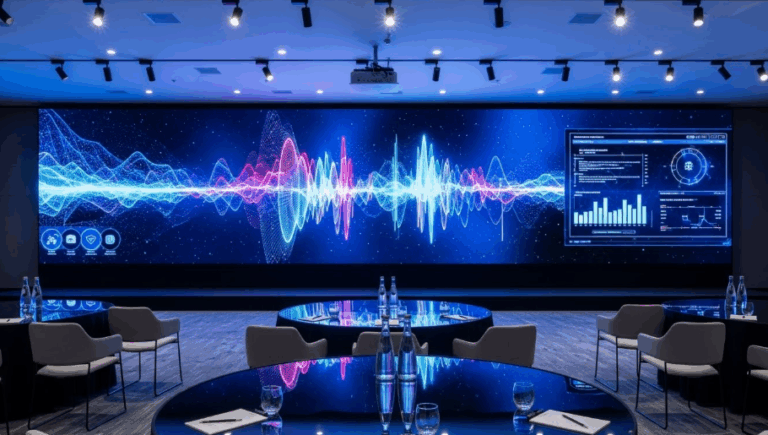Table of Contents
Types of LED Chips
Working Principle and Structure of LED Chips
Application Areas of LED Chips
Impact of LED Chips on LED Display Screens
How to Identify the Quality of LED Display Chips?
Maintenance Tips for LED Chips
Types of LED Chips
LED chips, as an important technology in the lighting industry today, are increasingly widely used. LED chips come in various types. In terms of colors, there are various options such as red, green, blue, yellow, etc. In terms of emission angles, there are options like 30°, 45°, 60°, 90°, 120°, etc. In terms of size, there are various specifications like 3528, 5050, 3014, etc. This diversity of types allows LED chips to meet various application requirements.

Working Principle and Structure of LED Chips
The core of an LED chip is a semiconductor chip. When current passes through the chip, electrons and holes recombine and release energy, which is emitted in the form of photons, the light we see. The structure of LED chips typically consists of chips, pins, brackets, and epoxy resin encapsulation, ensuring their stability and durability. Take you to understand LED chips: technology, application and development.
Application Areas of LED Chips
Home Lighting: LED bulbs, tubes, etc.
Commercial Lighting: malls, office buildings, hotels, etc.
Vehicle Lighting: car headlights, taillights, indicator lights, etc.
Electronic Displays: LED display screens, TV backlighting, etc.

Impact of LED Chips on LED Display Screens
Brightness and Uniformity: The brightness and uniformity of LED chips affect the visual effect of the entire display screen. High-quality LED chips can provide uniform brightness, ensuring that there are no significant brightness differences or unevenness on the display screen surface. Here’s what you need to know about nit brightness.
Color Rendering: The color temperature and emission performance of LED chips determine the color rendering of LED display screens. High-quality LED chips can accurately reproduce various colors, providing vivid and realistic color effects, making the displayed content more vibrant.
Lifetime and Stability: The lifetime and stability of LED chips directly affect the reliability and service life of LED display screens. High-quality LED chips have a long lifespan and stable light decay characteristics, ensuring long-term stable operation of the display screen, reducing maintenance and replacement costs.
Power Consumption and Efficiency: The power consumption and efficiency of LED chips determine the energy consumption of LED display screens. Energy-efficient LED chips can provide good light efficiency while reducing the energy consumption of the display screen, saving electricity costs and meeting the requirements of energy conservation and emission reduction.
Reliability and Maintenance Costs: The quality and performance of LED chips directly affect the reliability and maintenance costs of the display screen. High-quality LED chips have lower failure rates and stable performance, reducing the frequency of maintenance and replacement, thereby reducing maintenance costs and downtime.
Visual Effects and User Experience: The quality of LED chips directly determines the visual effects and user experience of the display screen. High-quality LED chips can provide clear, vivid, and stable image and video display, bringing better visual enjoyment and user experience to the audience. What should I do if the LED display screen cannot load images?

Identifying the Quality of LED Display Chips
The quality of LED chips can be identified through the following methods:
Visual Inspection: Check whether the LED chips on the display screen emit light uniformly, whether the colors are consistent, and whether there are bright spots, dark spots, or dead pixels.
Brightness Comparison: Compare the brightness of different areas on the LED display screen to check for significant brightness differences.
Color Check: Inspect whether the colors displayed on the LED display screen are accurate, vivid, and whether there are color deviations or distortions.
Use of Testing Instruments: Use professional LED testing instruments to measure parameters such as brightness, color temperature, color rendering index, etc., to evaluate the quality of LED chips.
Temperature Monitoring: Observe the temperature of the LED chips when the display screen is operating; excessively high temperatures may indicate issues with the LED chips.

Maintenance Tips for LED Chips
Regular Cleaning: Use a clean, soft cloth to clean the surface of the chips, avoiding dust accumulation that may affect light efficiency.
Avoid Frequent Switching: The lifespan of LED chips is related to the number of switches, so try to minimize frequent switching.
Pay Attention to Heat Dissipation: Ensure good ventilation around the LED chips to prevent overheating that may affect their lifespan.
By understanding the types, working principles, application areas, influencing factors, and maintenance tips of LED chips, you can better select and use LED products, providing more efficient and environmentally friendly lighting and display solutions for your life and work.





